Australian Tropical Rainforest Plants - Online edition
Trichosanthes pentaphylla F.Muell. ex Benth.
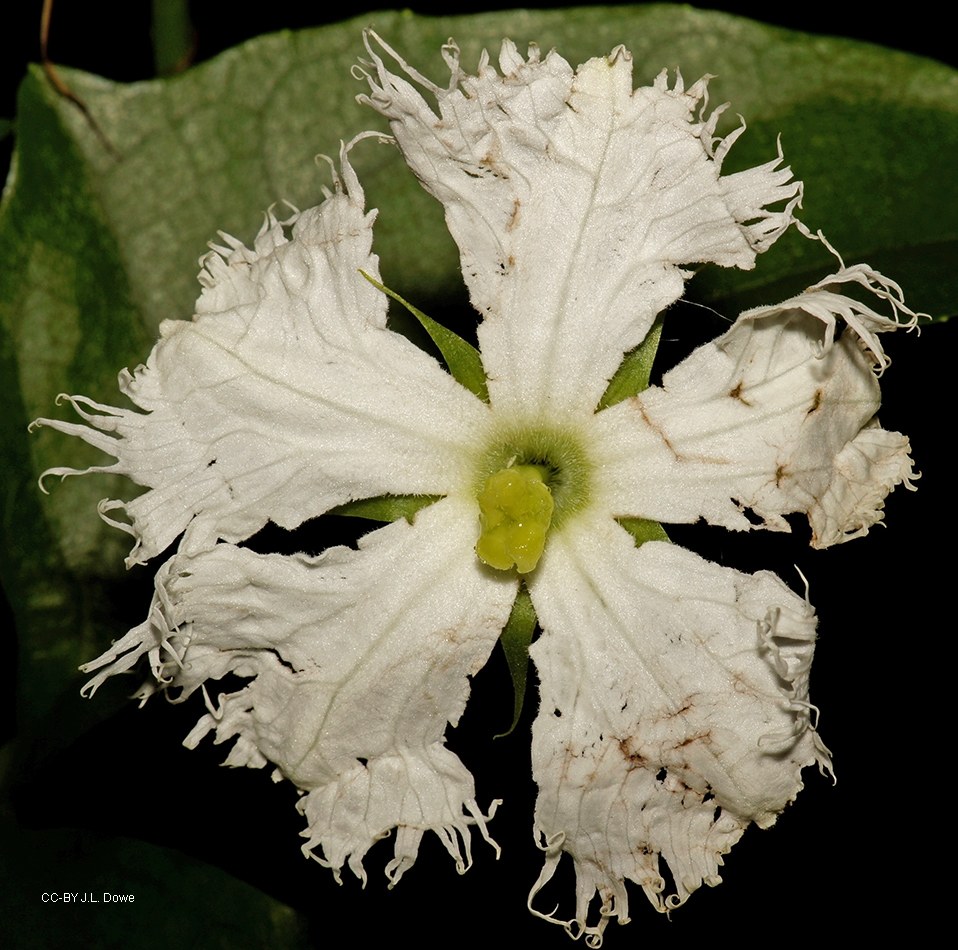
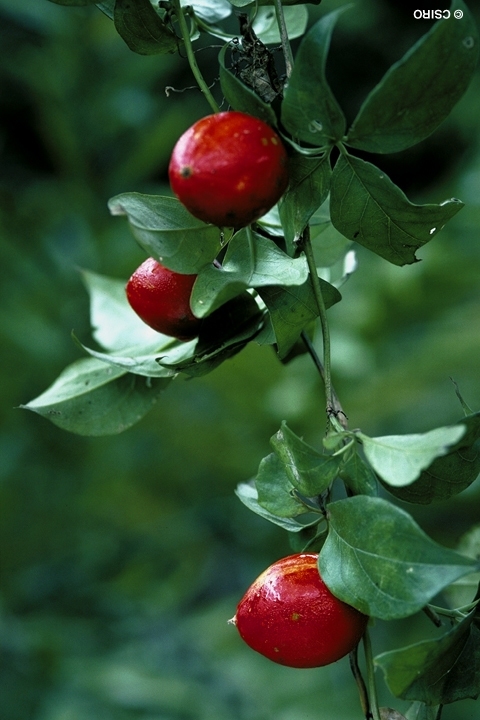
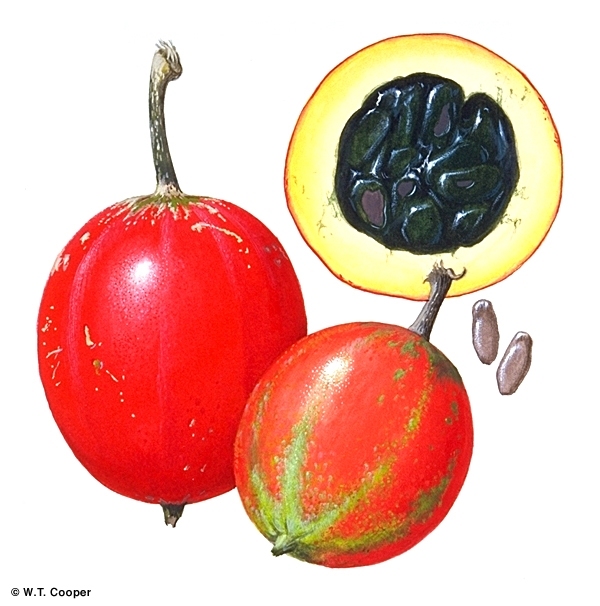
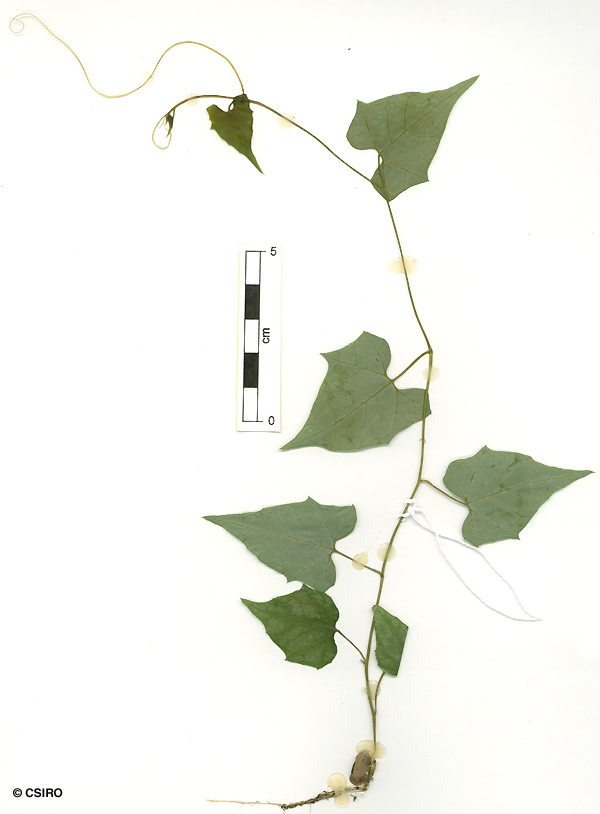



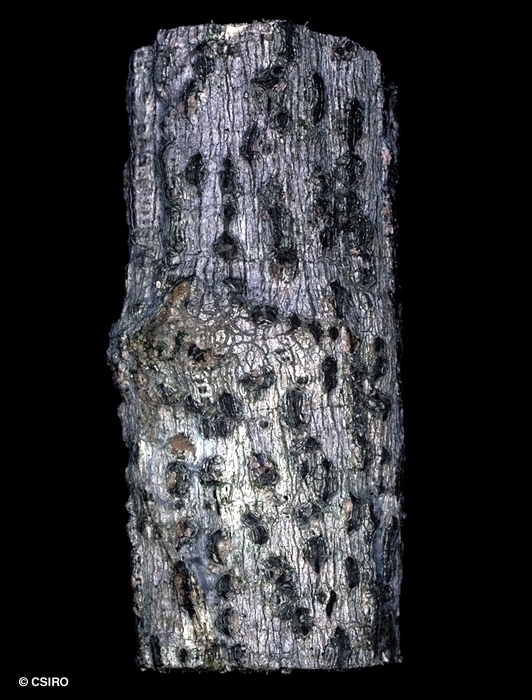

Bentham, G. (1867) Flora Australiensis 3: 314. Lectotype: Queensland. North Kennedy District: "Mt Grame: [Mt Graham, W of Rockingham Bay], June 1864, [probably J.Dallachy s.n. for F.Mueller] (lecto: MEL100120, photo!).
Red Gourd
Leaves compound, digitate with 3-5 leaflets, juveniles simple or 3-foliolate, lobed or unlobed; compound leaf petioles about 1.5-6 cm long; leaflet blades about 4.5-17 x 1.8-11 cm, central and basal leaflets sessile or on petiolules to 13 mm long; leaflet blades scabrous as a result of white scale-like cystoliths. A large (2-14 x 1.5-8 mm) leaf-like, stipule-like structure (probract) present at each node; each structure with 2-8 large flat glands visible on the concave side.
Male and female flowers on different plants. Male flowers: inflorescences racemose or co-axillary with a solitary flower; inflorescence up to 20 cm long with a large leafy bract at the base of each flower; bracts obovate, about 2.5 x 4 cm, apex fimbriate, surface of each bract clothed in flat, green glands. Hypanthium 3-4.6 cm long, inner surface densely clothed in translucent hairs; calyx lobes triangular, 20-38 x 6-10 mm, margins entire or dissected by long, narrow teeth; corolla diameter ca. 50 mm, lobes about 14-25 x 15-20 mm with numerous fimbriations at the apex; each fimbriate lobe about 8-10 mm long and up to 4 mm wide near the base; stamens 3, attached to the inner surface of the hypanthium well below the corolla, fused together to form a central column about 4-5 mm diam; anthers about 1.5 mm long, two anthers with 2 locules and one anther with 1 locule; Locules +/- S-shaped. Female flowers: Flowers borne singly in the leaf axils, or paired but then one much older; each flower 30-40 mm diam., pedicel about 8-19 mm long; calyx tube (hypanthium) about 40-47 mm long; calyx lobes narrowly triangular, about 10-15; petals fringed with hairs, 14-18 mm long; ovary 13-16 mm; style about 12 mm long. Stigma green.
Fruits globose to ellipsoid, 40-75 x 45-65 mm, red when ripe. Apex of the fruit beaked (hard, elongated and pointed). Fruit wall about 7-14 mm thick, yellow in transverse section. Seeds numerous, immersed in a dark green unattractive-looking pulp. Seeds about 7-17 x 5-8 mm long. Testa hard and shiny. Cotyledons thick and broad, about 12-13 x 6 mm. Radicle much narrower than the cotyledons, about 1 mm long.
One cataphyll produced before the first leaf. First leaf ovate, cordate or triangular, apex acuminate, base truncate to cordate, about 2 x 1 cm, petioles about 8 mm long. Leaf blade margin toothed or lobed. Scattered scabrid hairs visible with a lens on the upper surface of the leaf blade. At the tenth leaf stage: leaf blade triangular to cordate, apex acuminate to apiculate, base cordate to auriculate, about 5 x 3.5 cm, petiole about 1.5-2 cm long. Margin toothed or lobed with about five to eight teeth on each side. Upper surface sparsely clothed in scabrid hairs or glands. Tendrils simple (unbranched) leaf-opposed, tightly coiled, present from about the third leaf onwards.
Occurs in CYP, NEQ and the far northern part of CEQ. Altitudinal range from near sea level to 400 m. Grows in vine thicket, monsoon forest and on lowland rain forest edges.





